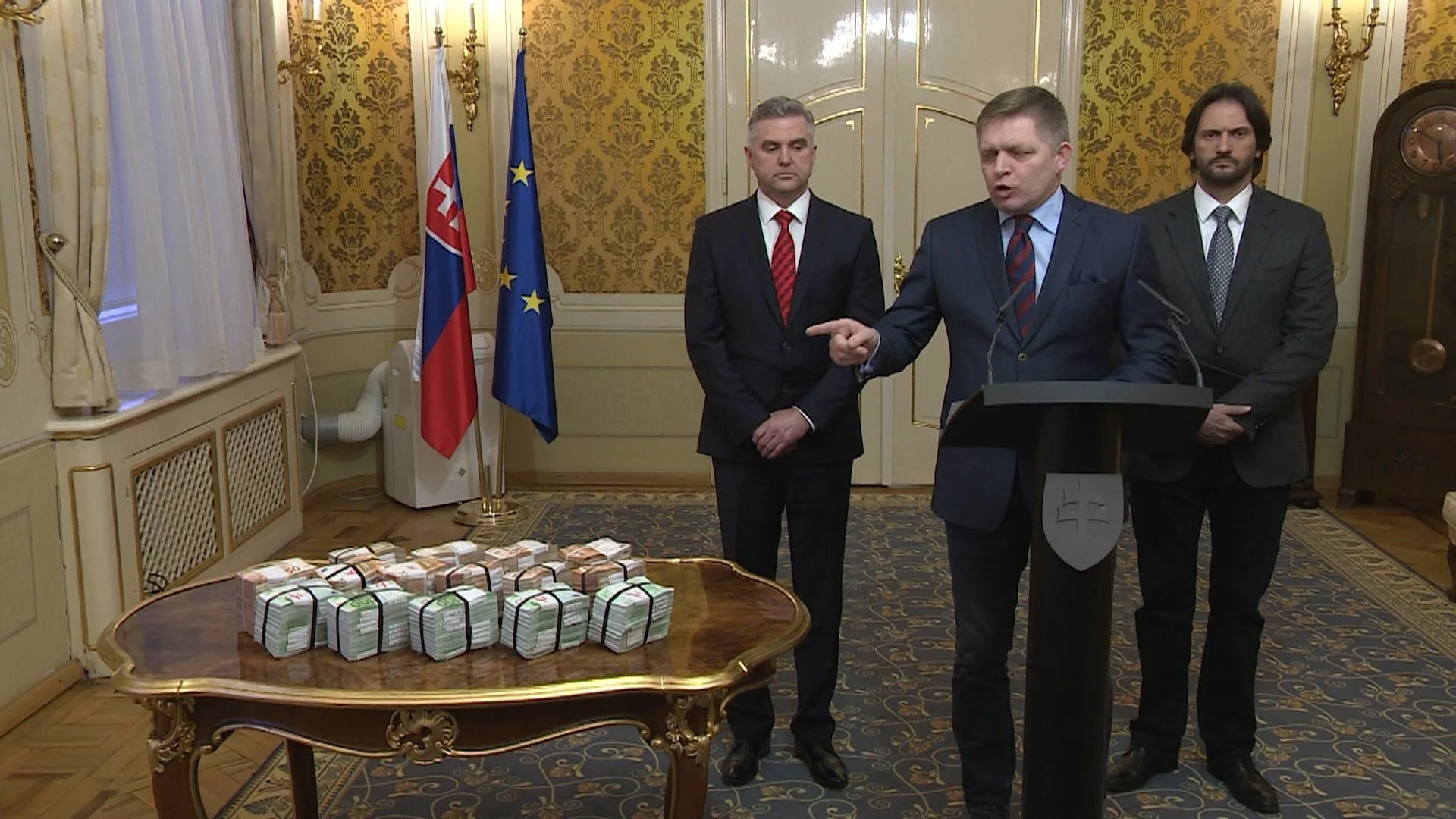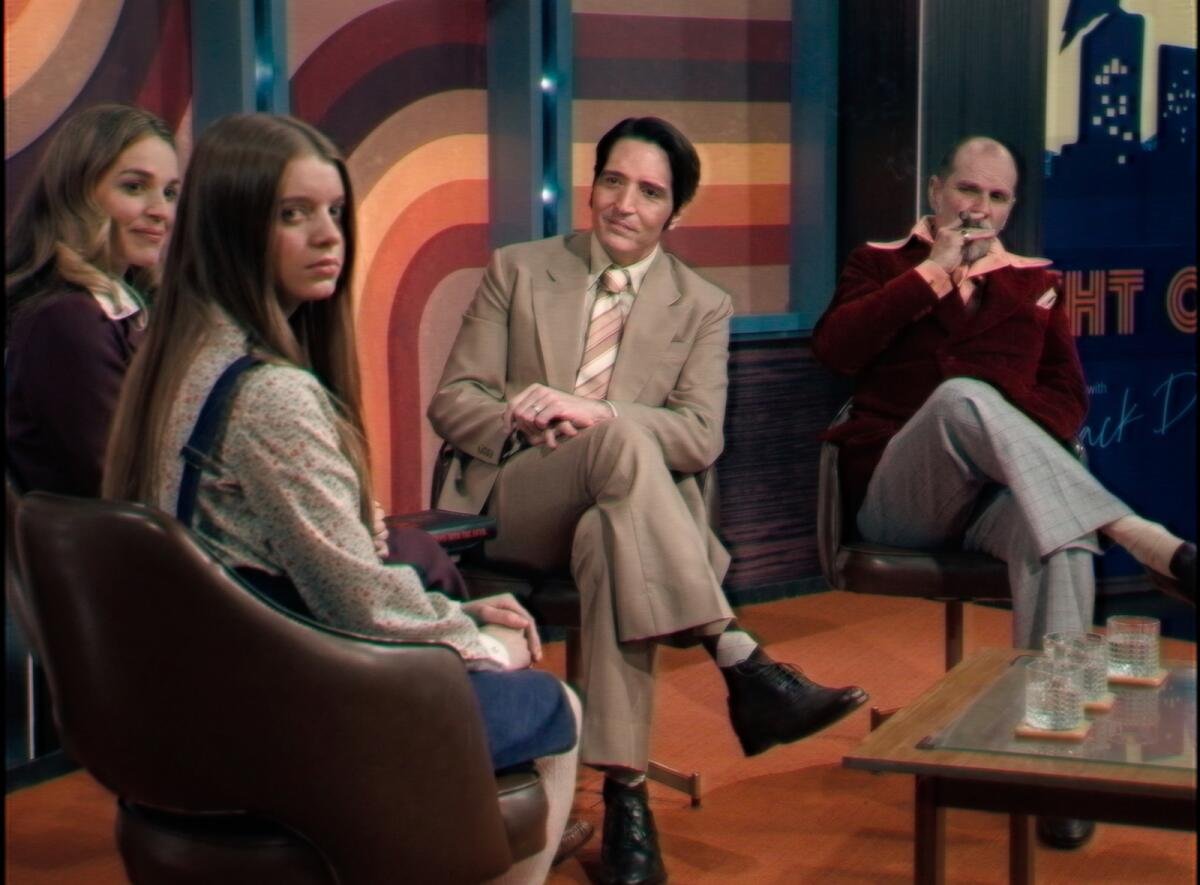Hot Docs 2022: The Killing of a Journalist
If you’ve read Stieg Larsson’s Lisbeth Salander novels or watched the adaptations, you’d probably think that the kinds of appalling corruption, conspiracy, and crime featured in the stories is an exaggeration of reality. You’d be wrong. Matt Sarnacki’s The Killing of a Journalist proves this with its exploration of rampant corruption in the Central European nation of Slovakia. The Killing of a Journalist even shares a narrative resemblance to The Girl Who Played with Fire, with the murder of a journalist setting off an investigation into government links to organized crime and the rotten state of a national justice system. Sadly, The Killing of a Journalist is a documentary, not a drama, so its thrilling investigative look at Slovakia comes with a sobering reality check: it’s a procedural potboiler, but about the real world.
Sarnacki’s documentary traces the explosive fallout of the murder of Slovakian journalist Ján Kuciak and his fiancée Martina Kušnírová on February 21, 2018. Kuciak’s murder was the first time a journalist was murdered in modern Slovakia and it spurned a national reckoning. At the time of his murder, Kuciak was investigating the financial dealings of millionaire Marián Kocner, one of the oligarchs with inordinant control over the levers of power in the small nation. Everyone assumed that Kocner was behind Kuciak’s murder, but no one could have predicted the depths of corruption that would come to light during the investigation into Kuciak’s murder.
The Killing of a Journalist traces this investigation, which pulls on the thread of corruption in Slovakia and manages to unravel the whole damn democracy. Sarnacki and his team chart the investigation with remarkable clarity. They rely on interviews with Kuciak’s fellow journalists and family members as well as police investigators, lawyers, and witnesses. They also use a significant amount of archival footage from the case files, including surveillance footage of Kuciak, police interrogations, court depositions, and a massive tranche of online communications. Their access to the documents and footage is impressive—they essentially present the entirety of the criminal case in a digestible 100-minute documentary format.
What at first seems to be a straightforward murder case turns into the uncovering of a massive conspiracy, sparking a political circus. Tens of thousands of Slovakians take to the streets to protest government corruption and everyone from prominent judges to the President of the Slokavian Police to the Prime Minister of Slovakia are implicated in the investigation. Each allegation and discovery leads to bigger revelations about the country and the state of corruption in its institutions. For instance, we learn how Kocner used a female associate to honeypot dozens of the country’s most prominent lawmakers, keeping incriminating photos and videos as blackmail to force their subservience in the legislature. We see the chat logs of once-encrypted discussions between Kocner and his associates in which he discusses assassination attempts through code words and tells judges how to render verdicts in important court cases. Remarkably, we even see footage of Kocner and politicians setting up spy cams to record fellow judges, lawyers, and politicians.
The levels of deceit and conspiracy seem like something out of a paperback potboiler, thus my earlier mention of Stieg Larsson’s novels, but you get to see the footage with your own eyes. Nothing is fabricated. Nothing is exaggerated. The reality of Slovakia’s institutional corruption really is this absurd, the film reveals. As the film builds towards the trial and verdict regarding Kocner’s guilt or innocence, the sense of dread in the subjects and the viewer builds as well. We come to understand that while individual justice is desperately wanted for the sake of Kuciak and Kušnírová, it won’t undo the dysfunctions of the system or clean up the state of the country’s government. You start to sense the depression and dejection of the investigators and journalists uncovering the case, as each new revelation creates an even larger mountain of institutional issues to work through.
Ultimately, the film leaves us with the conclusion that Slovakia’s legal system is not just rotten, but bereft of a moral core. In a situation such as this, what does the verdict of one trial matter when the entire system works to serve the interests of a small cadre of rich criminals? It’s essentially a sham. Nevertheless, the revelations are important, if only for the sake of exposing truth.
Even if Kocner is convicted, the nation remains under the influence of his ilk. However, the ultimate irony is that by allegedly killing Kuciak in order to cover up his financial crimes, Kocner opened the door to a total earthquake of allegations. Had he not killed Kuciak, the public would’ve never learned of the depths of his criminal conspiracies. But such is the state of power—those with power always overreach, even if the reality of their power is that nothing short of political upheaval can truly threaten it.
Sarnacki’s film shows that the killing of a journalist uncovered the killing of a democracy as well. Or rather, the revelation that the democracy has long been deceased—if it even existed in the first place.
8 out of 10
The Killing of a Journalist (2022, Denmark, Czechia, USA)
Directed by Matt Sarnecki.



Bertrand Bonello’s The Beast starring Lea Seydoux and George MacKay is a fascinating, messy film that imagines a captivating romance and an intriguing, if not entirely credible, future.